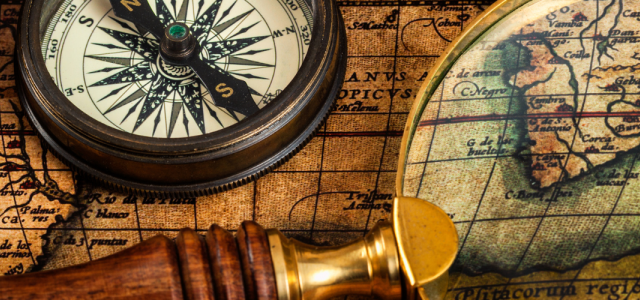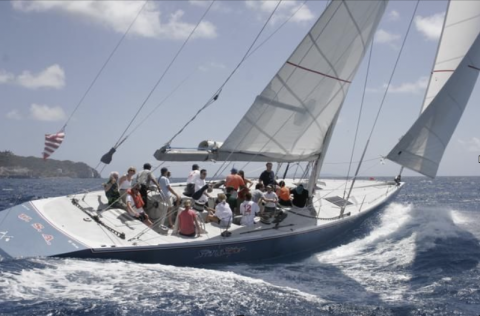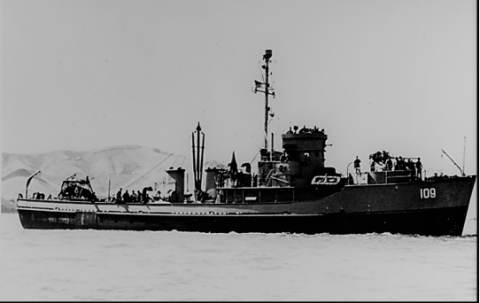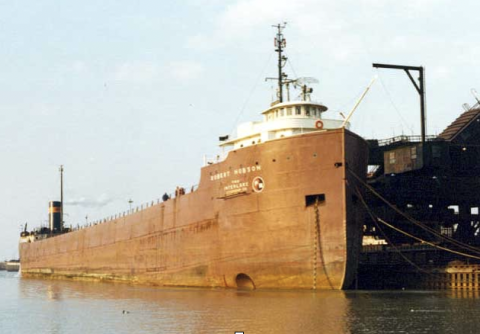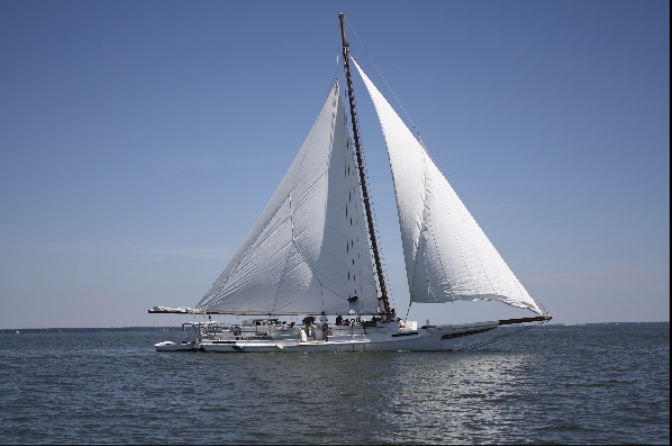We spent a lot of time in search for the “just right” symbol for our practice. For some time, I have favored a nautical theme as our public image to reflect my upbringing on the Great Lakes (Superior and Michigan) and my long tenure on the Chesapeake Bay. In our recent company brochure, we give a nod to The America’s Cup skipper, Dennis Conner when he said, “My goal in sailing isn’t to be brilliant or flashy in individual races, just be consistent over the long run.” Sage advice for investors as well as racing sailors. It seems like there are many folks who have a single hit record, or one good year in the stock market. In the world of sports, the likes of Cal Ripken, Jr., Al Kaline, Brett Favre, or Gordie Howe will principally be remembered not so much for a single good season, but a lifetime of uninterrupted play. I would rather aspire to that record, then say, being a one hit wonder, like the Hollywood Argyles famous “Alley Oop”.
Since I am a believer in longevity, my first response was to use the image of Stars & Stripes. Dennis Connor skippered this 12- meter yacht in one of America’s Cup races. The America’s Cup is the world’s oldest international sporting event. The first race was held in 1851 off the coast of England. It was won by the sloop America, and from thereafter the race was given the name that we now all know and recognize. Over the years there were actually two Stars & Stripes – the USA-11 and the US-52. They were both Monohull keel sloops. In 1988, Conner introduced the catamaran USA-1 into the America’s Cup races. This forever changed the face of racing Yachts, from the sleek lines of the J-Class to the dual and tri-hulls that generated speed at the expense of grace. From these catamarans we have revolved back to a Monohull-of sorts- with wings that deploy to allow the craft to skim the water’s surface and generate much greater speed. Notwithstanding the added speed, I am afraid that would not work for the purist bent in my sailing soul, so that idea was regrettably quickly scuttled.
Then I thought about other ships that have had a direct influence on my life. My Dad served on YMS-109 (USS Brambling). He saw action on this coastal mine sweeper in the South Pacific as the 5th Fleet stormed toward Okinawa in some of the bloodiest fighting of the Second World War. I may have actually seen that very ship under private ownership in the Chesapeake Bay in the early 90’s, but I cannot be certain. After she was decommissioned it was purchased by a private party, but the following history has been lost. In any case, a mine sweeper has a neat image. These ships were tasked with clearing the way and removing any hazards to ships and sailors that could be lurking. If you think about it, that isn’t too bad of an image for an investment management company. Navigate the many investment dangers with us… Maybe not. As much as I would have liked to send a salute to my Dad and his shipmates, I had second thoughts about a warship as an appropriate image for an investment company.
Sometimes Wall Street can be brutal but not on the scale of the War in the Pacific! Plus, gray isn’t a very fetching color. Let’s move on…
Then I turned to my personal “year before the mast”. I had the good fortune to spend a shipping season on a freighter on the Great Lakes. I was a young man between my freshman and sophomore year of college in search of adventure. The S.S. Robert Hobson was a 600-foot ore carrier. Somewhat smaller than the famous S.S. Edmund Fitzgerald that sank on November 10, 1975. Hauling iron ore to the great steel mills and then coal back up to the far northern reaches was an adventure that overshadowed anything I had learned in the classroom at that time in my life! I can still see those huge pots of molten steel being poured from the blast furnaces of U.S. Steel mills in Chicago and Gary, Indiana. I recall the intense heat of the steel mills contrasted to the frozen waters of Lake Superior as we followed the Ice-Breaker Mackinaw to dry-dock the Hobson on an icy December day. I have a boatload of great memories. What a thrill! Hard work, natural adventure, and great comradery are all virtues one would expect from a life well lived. Even though the Hobson was a foundational building block in my life, the ship does lack a certain amount of style to fill the role we were searching for.
Finally, I looked to the Chesapeake Bay. The home of the best blue crabs in the universe! There are many storied vessels on the Bay. For example, the Hooper Island Draketail with that distinctive fantail and large open cockpit for working the crab pots. Instead of relying on sail power, an internal combustion engine powered the Draketail. That made them the ‘newcomers’ on the Bay. A young pedigree, dating back to the early 1920s, they were powered by small engines and used for tending the crab pots that dot the Bay from Havre de Grace to Norfolk.
The original Skipjack’s were designed for harvesting oysters. Oysters were a favored crop of the Bay dating as far back as 2,500 B.C. Their popularity continued with European settlers, and they were adept at mechanically dredging large amounts of them from the bay. Then in 1820, Maryland banned the use of dredging equipment all together. Harvesting by hand was allowed– wading in the shallows – but boats or other devices could not be used. In 1865, Maryland reinstated the harvest, and overnight the Skipjack became the favored vessel for dredging the bottoms. For 100 years, power boats were forbidden to harvest. A new law in 1965 was a watershed development. It allowed power boats to harvest two days a week and sail the remaining days. It is a testament to innovation. Power boats can claim as much bounty in two days as sail boats can accomplish in five days. Nonetheless, to this day there is still a small fleet of Skipjacks that work the Bay. There are still some attached to the “old way” of doing things.
The Skipjack was designed with the intent of being able to function with a small, carefully chosen crew to operate in all sorts of weather. There is one Mainsail that usually runs the length of the boat and a forward Jib attached to the bowsprit. Simple and elegant. The Skipjack has one job: harvest oysters in the most efficient and cost-conscious way possible. In much the same way, a single person, outfitted with a laptop and sufficient internet connection, is able to manage a portfolio of investments.
Years ago, Smith-Barney ran a commercial with John Houseman whose famous line was, “We make money the old-fashion way…: I have always thought that was the only way to make money. There is no question that I am solidly a fan of many things new, and I embrace technology in every way we can. We now live and work in a world of algorithm trading, robo-advisor, and instant quotes via our wristwatches. That being the case, the fundamentals for good investing are the same as they were 100 years ago. A good investment is still a good investment, and in 99% of the cases there are fundamentals driving that choice. A good product, good management, effective delivery systems, price/earnings ratios and sustainability have been in vogue since a group of traders gathered under a Buttonwood Tree in May of 1792 to create what would become the New York Stock Exchange. Admittedly, we use different words to describe the same thing. Not sure why, but I know it is true. However, at the end of the day, little substance has changed and for that reason, it is the image of the Skipjack that drives the heart of what we do.
If you are close to our Las Cruces office, stop by and check out the neat Skipjack model of the Rebecca T. Ruark we have in our reception area.

